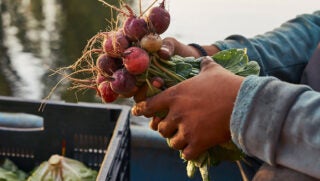According to CoreLogic, insured storm losses could range from $2 billion to $4.5 billion from Hurricane Michael. To help residents, farmers and ranchers affected by the devastation caused by Hurricane Michael, U.S. Secretary of Agriculture Sonny Perdue has directed the USDA to aid people in their recovery efforts. USDA staff in the regional, state and county offices are actively responding, providing emergency response staffing and a variety of program flexibility and other assistance to residents, agricultural producers, and impacted communities at large.
“The widespread devastation I saw in Georgia while surveying the damage this week makes clear that many agricultural producers were significantly impacted by this storm,” said Secretary Perdue, who traveled to storm-affected areas in Georgia with President Trump and Vice President Pence earlier this week. “USDA is committed to helping farmers and ranchers and rural communities successfully rebuild following Hurricane Michael.”
Some of the many ways USDA and its component agencies are helping residents in Alabama, Florida, and Georgia recover following Hurricane Michael include:
Forest Service Assisting Evacuation and Rescue
The USDA’s Forest Service assisted with recent Hurricane Michael response efforts, led by the FEMA. Specifically, the Forest Service manages FEMA’s Emergency Support Function #4, which mobilizes personnel, equipment, and resources in support of disaster responses. In total, 152 evacuations, 4,194 rescues/assists, 21,568 shelter-in-place checks and 2,100 animal assists were completed.
Farm Production and Conservation Agencies Helping Producers Weather Financial Impacts
President Trump’s disaster declarations for Florida and Georgia means eligible producers in those states can take advantage of a USDA emergency loan program. These low-interest loans help farmers and ranchers recover from production and physical losses. USDA also offers additional programs tailored to the needs of specific agricultural sectors to help producers recover from losses and to help rebuild their operations.
USDA, through its new website Farmers.gov, recently launched a disaster assistance discovery tool that walks producers through five questions to help them identify personalized results of which USDA disaster assistance programs can help them recover after a natural disaster.
APHIS Responding to Animal Emergencies
When disaster strikes and upon request, USDA’s Animal and Plant Health Inspection Service (APHIS) can provide assistance using boats and other equipment. Inspectors are coordinating closely with zoos, breeders, and other licensed facilities in the region to ensure the safety of animals in their care and checking local regulated facilities in the storm path to assess damage and ensure the welfare of those animals. APHIS also is assisting Georgia state officials and FEMA with poultry carcass disposal planning efforts.
Food and Nutrition Service
USDA’s Food and Nutrition Service (FNS) has been coordinating with FEMA on immediate disaster response, and with state, local and voluntary organizations to provide food for shelters and other mass feeding sites.
Food Safety and Inspection Service Preventing Foodborne Illness
As residents make it back into their homes, USDA Food Safety and Inspection Service (FSIS) is helping ensure they are taking the proper steps to reduce the risk of foodborne illness. Food safety tips after a power outage and flooding are available on the FSIS website.
Helping Operations Recover
Farmers and ranchers that suffered damage to working lands and livestock mortality due to Hurricane Michael are encouraged to contact their local USDA Service Center. USDA has multiple programs to help producers manage their operations.

